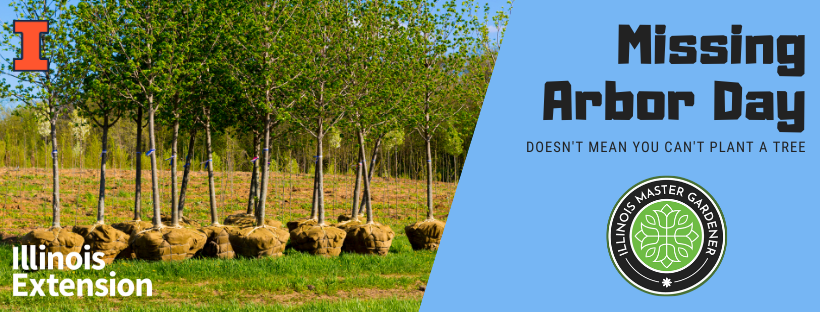If you missed Arbor Day at the end of April, it is still not too late to plant a tree. Spring and fall are the best times to add trees to your landscape. Trees are wonderful additions to any yard now, and also for the future. I recently read a delightful sentiment by garden writer Scott Beuerlein who was writing about planting oak trees. He wrote,” For the maximum appreciation of any oak you plant, plant it while you’re still young, eat healthy, exercise, look both ways when crossing the street, and try your best to avoid provoking strangers.”
Yes, oaks are long-lived, especially if you choose a species that is tough and adaptable to Illinois: burr oak, swamp white oak, chinkapin oak, and shingle oak.
When picking a site in your yard, look up and look wide. That cute little transplant you brought home from the nursery will not stay that size for long. It needs to be well away from any other trees, buildings, or overhead utility lines. Planting a tree thinking you will just keep it trimmed to fit in its site is not a viable option, especially with the large shade trees.
Old tree planting advice was to put it in the ground at the same level as it is growing in the container. That has changed. First, find the root flare; that part of the trunk that splays out wider than the upright part of the trunk. You may have to remove some of the soil in the pot to find it. Dig the hole only deep enough so when the tree is situated, the root flare is above ground. However, the dug hole should be twice as wide as the root ball.
Next check for any roots growing sideways that circle around the root ball. If you are unable to straighten them out, remove them. They look harmless now, but as they expand with growth, they will cut off nutrient movement up and down the trunk eventually choking the tree.
Remove any wires, burlap, or plastic, lower the root ball into the hole, and backfill with the same earth you removed to dig the hole. It is not necessary, indeed discouraged to add any compost or soil amendments. This practice has also changed from old tree planting protocols. The reason is to prevent the roots from staying only in the hole and growing in circles producing the aforementioned choking root problem.
Water well to settle the soil around the roots. The next two years monitor the soil moisture, especially the first year. After that, the roots should be deep enough to make it with normal weather. During a drought, a long slow trickle of water once a month will ensure it isn’t severely stressed.
Enjoy your new tree. If you have any questions, please call the Illinois Extension Master Gardeners of Edgar County at 217-465-8585.
About Extension: Illinois Extension leads public outreach for University of Illinois by translating research into action plans that allow Illinois families, businesses, and community leaders to solve problems, make informed decisions, and adapt to changes and opportunities.
Source: Jan Phipps, Edgar County Master Gardener
